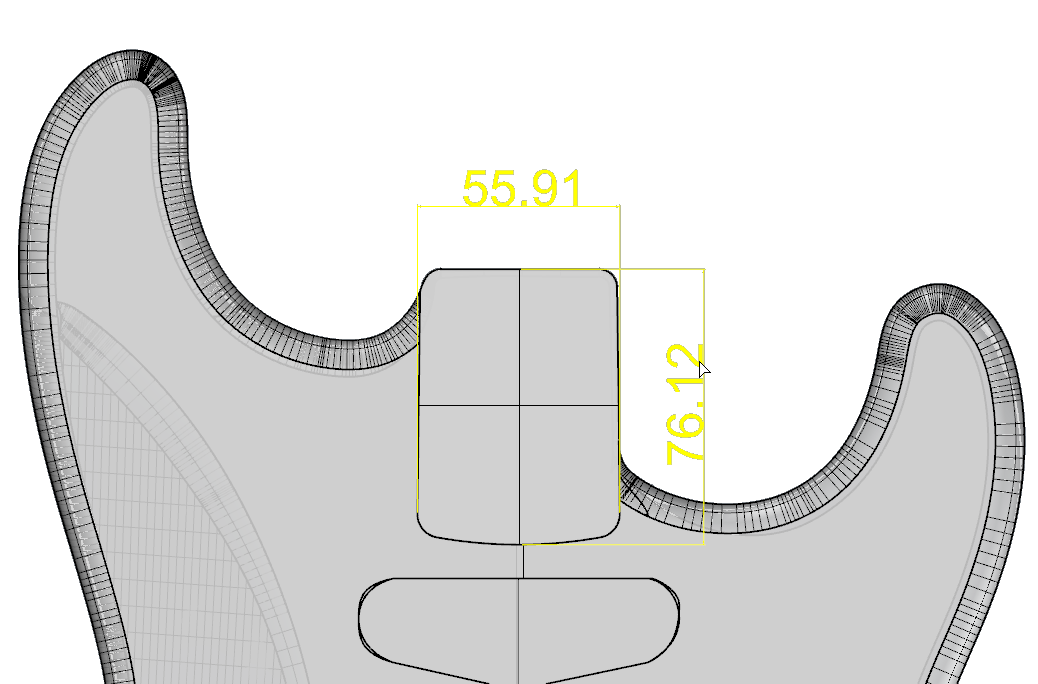

Per suonare dal vivo uso un pezzo di gomma bianca per bloccarlo, è il solo modo per impedire attimi indesiderati di silenzio. Eppure sono anni che non ci riesco… Un’altra assurdità è l’interruttore messo alla fine della fila, nel posto più esposto, dove il pugno si appoggia o si muove. Sono le stesse combinazioni della Eko ma presentate in un ordine diverso e totalmente illogico, con il pulsante del pickup ponte posto presso il pickup manico e vice-versa (perché? rischio di infrangere un brevetto Eko?). T+B per Treble & Bass, i due pickups estremi.Si noti bene che questi pickup sono a doppio avvolgimento: ci sono complessivamente OTTO bobine a bordo di questo strumento! La pulsantiera seleziona le combinazioni di pickup come segue: Le sole differenze erano i coperchi metallici e il tipo di switches. I pickup e l’elettronica sono simili a quelli usati da Welson, Gemelli e Bartolini nello stesso periodo. Una bella Ardsley del 1963 completamente originale - il che significa che i componenti potrebbero essere stati fatti nel 1962 o la chitarra montata nel 1964 (gli anni di fabbricazione indicati nella presenta sezione deveno essere accolti con una approssimazione di +/- 1 anno, non oltre).Ĭredo che Ardsley fosse stato un importante rivenditore di New York. Apart from that, this switch stripe is not only the most reliable and silent of its kind, it’s the only one that really allows instant sound change by a stroke of the pick. For live playing I use a piece a white rubber to secure it, there is no other way for avoiding unwanted moments of silence.


I have been trying for years… Another nonsense is the cutout switch located at the end of the control stripe, in the most exposed position, where the player’s wrist moves or rests. It is merely a matter of getting accustomed to it. These are the same combination offered by Eko guitars but arranged in a different and completely illogical order, neck pickup switch being located by the bridge pickup and vice versa (why? fear of infringing an Eko patent?). T+B for Treble and Bass, bridge and neck pickup.Note that those pickups are dual-coil: there are EIGHT coils in all aboard this instrument! The rocker switches open pickup combinations as follows: The only differences are the pickup metal casings and the type of switches. Pickups and electronics are similar to those used at the same time by Welson, Gemelli and Bartolini. I believe Ardsley was a big retailer in New York. They are universally considered among the best in Fender production, not excessively large and with a shape which is often defined oval “C”.A clean all original Ardsley of 1963 - which means components could have been made in 1962 or the guitar assembled in 1964 (years of manufacture given in this section are to be taken with a +/-1 error margin but not more). 80" depth!Įarly to mid-'60s necks retained similar dimensions, but after 1963 they often featured more shoulder and seemed to be a bit chunkier than 1959 to 1961 necks. Rosewood-capped necks made after mid-59 were really flat and had a cross-section often below. However, in late 1958 a much flatter profile was adopted with thickness steadily below. These “V” shaped necks are often called boat neck.Įarly 1958 necks were flatter and rounded, though they still had a slight “V” feel. In the course of 1956 soft “V” shaped necks appeared, and gradually replaced the previous ones, but later in 1957 the profile became very prominent. Neck profiles of the Stratocasters changed a lot in the early years.ġ9 Stratocasters featured a huge “U” shaped neck, also called baseball bat, thick and large (e.g.94" depth and 1.60" wide at the first fret).


 0 kommentar(er)
0 kommentar(er)
